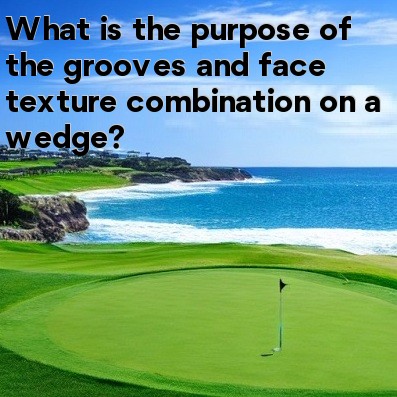
Golf wedges play a crucial role in a golfer's game, especially when it comes to short shots around the green. One of the key features that differentiate a wedge from other clubs is the combination of grooves and face texture on its clubhead.
Let's dive into the purpose of these grooves and face texture on a wedge:
- Provide Spin: The primary function of grooves on a wedge is to create spin on the golf ball. When the ball comes into contact with the grooves, they help to impart more backspin, allowing the ball to stop quickly on the greens. The greater number of grooves and deeper the grooves, the more friction is generated, resulting in higher spin rates.
- Enhance Control: The combination of grooves and face texture on a wedge also enhances a golfer's control over the ball. Whether it's a full shot, pitch, or chip, the grooves and face texture help to grip the ball better, minimizing the chances of the club sliding underneath it. This control allows players to be more precise with their shots, whether they are aiming for a specific target or trying to avoid hazards.
- Improve Contact: The grooves and face texture also aid in improving the quality of contact between the clubface and the ball. The grooves help to channel away moisture, debris, and grass, ensuring that the clubface contacts the ball cleanly. This clean contact leads to a more consistent and predictable shot, giving golfers greater confidence in their wedge play.
- Provide Options: The grooves and face texture combination on a wedge provides golfers with different shot options. By altering the angle of the clubface and the speed of the swing, players can control the trajectory, spin, and distance of their shots. Whether it's a high flop shot, a low punch, or a standard pitch, the grooves and face texture on the wedge contribute to the versatility of the club.
- Compliance with Rules: Additionally, the specific design, spacing, and dimensions of the grooves on a wedge are regulated by golf's governing bodies, such as the USGA (United States Golf Association) and the R&A (Royal and Ancient Golf Club of St Andrews). These regulations ensure that the grooves on a wedge do not provide an unfair advantage to players and maintain the integrity of the game.
Overall, the grooves and face texture combination on a wedge serve multiple purposes on the golf course. They enhance spin and control, improve contact, provide shot options, and comply with the rules of the game. Understanding the functionality of these features can help golfers make informed decisions when selecting wedges and executing shots around the green.





